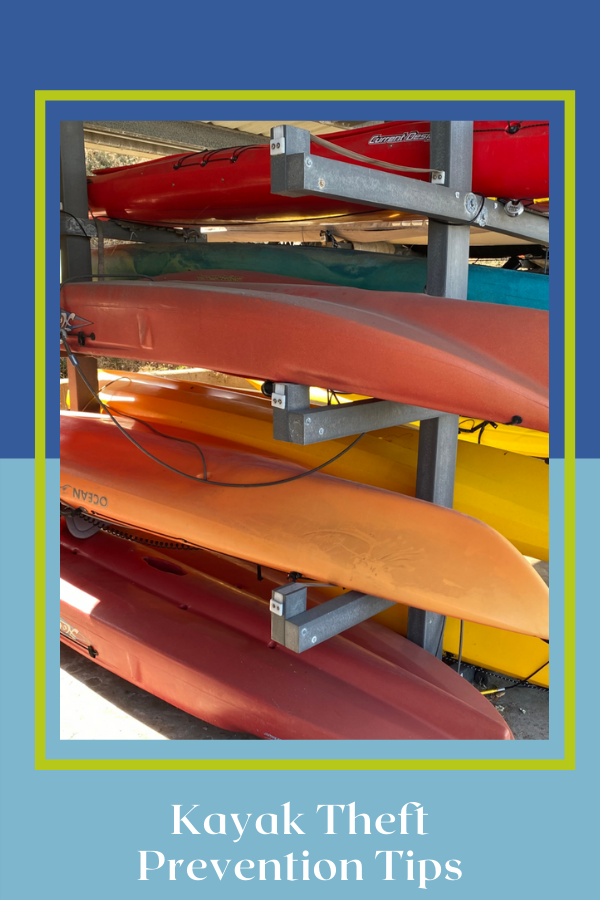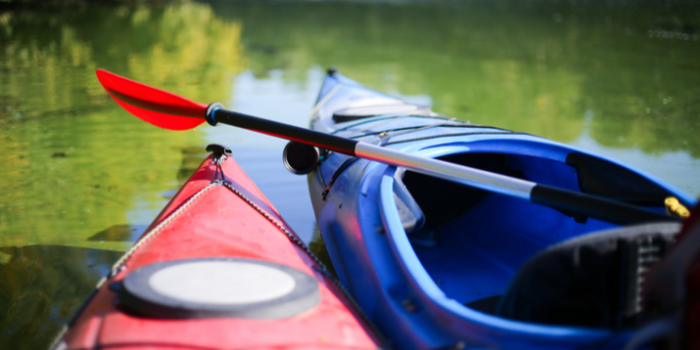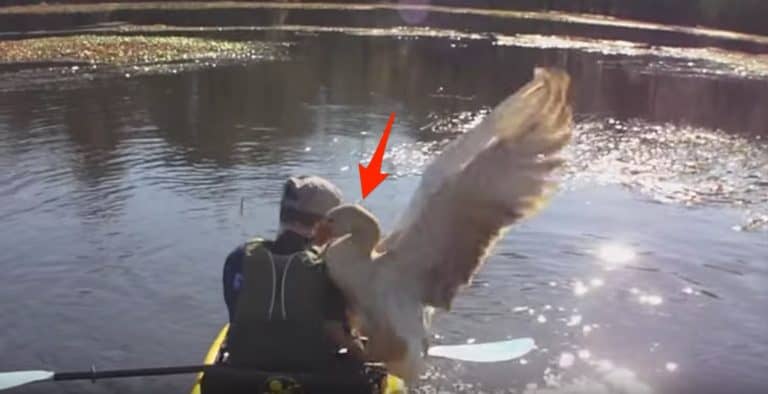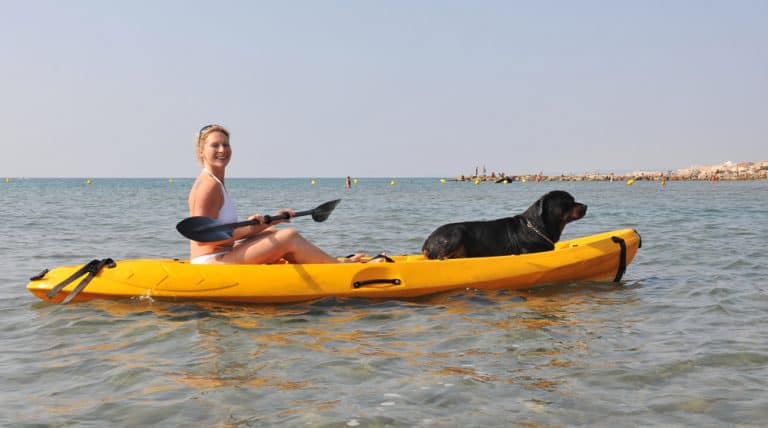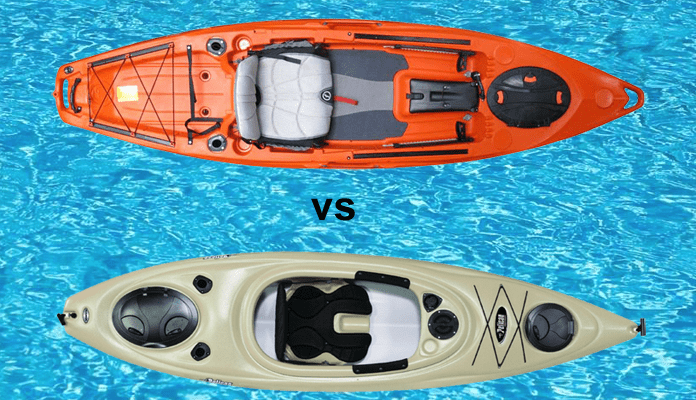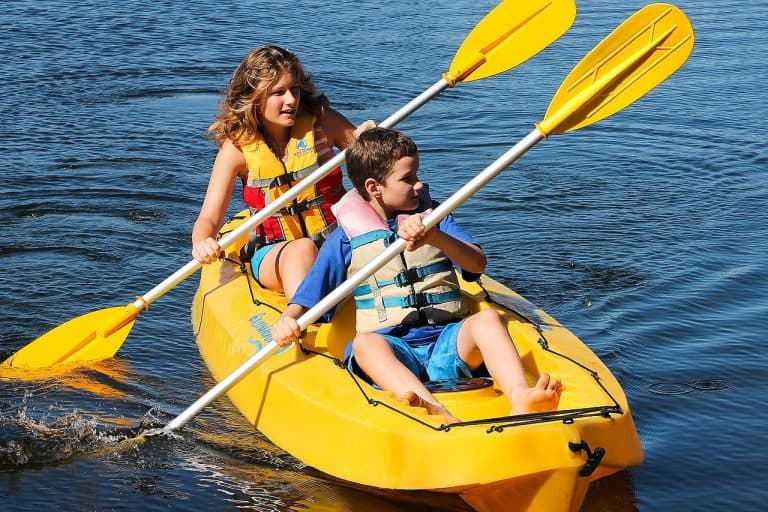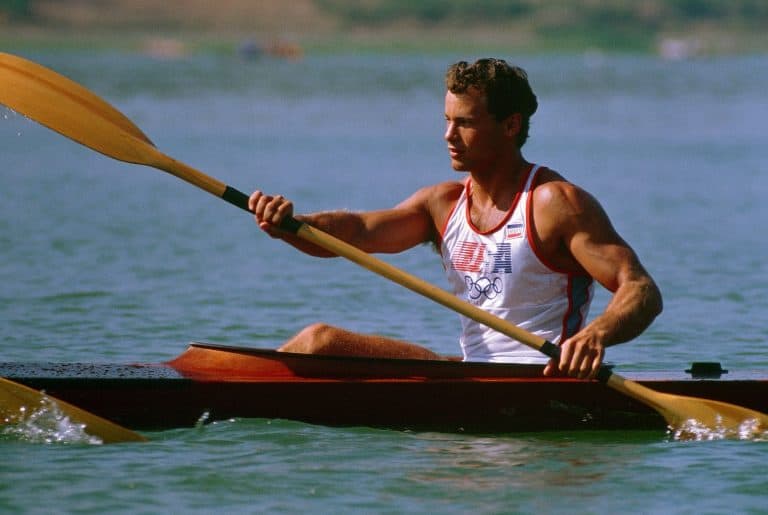Getting anything stolen sucks ”¦ a lot. Kayaks can be a little trickier to lock up and secure than other belongings because of their larger size and sometimes awkward shape.
The good news is that there are plenty of creative products and solutions that will help you guarantee the security of your kayak wherever you go. From locking straps for your roof rack to security cables for locking your kayaks outside your home, we are going to use this guide to cover it all.
If you live in a relatively safe area, you may be one of the lucky ones that don’t really have to worry about kayak theft prevention tips. For the rest of you, it really helps to be aware of these tips before your kayak falls into someone else’s greedy hands.
Without further adieu, we hope you enjoy our collection of kayak theft prevention tips!
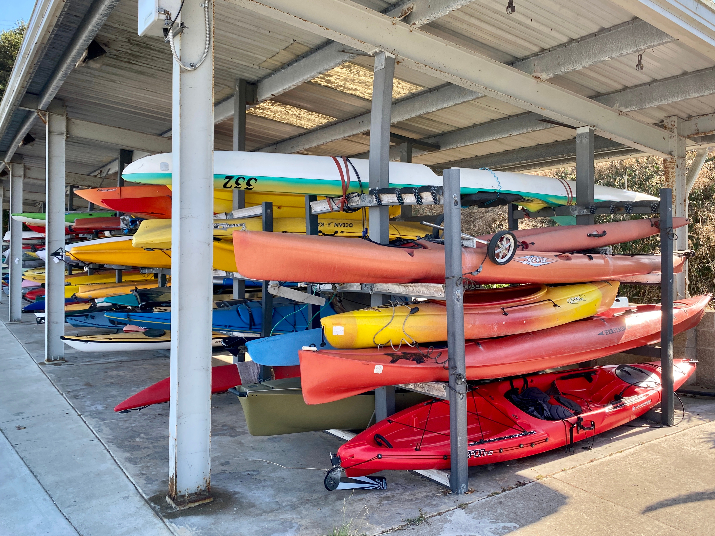
Photo by ZikG via Shutterstock
How Likely Is It For Kayaks To Get Stolen?
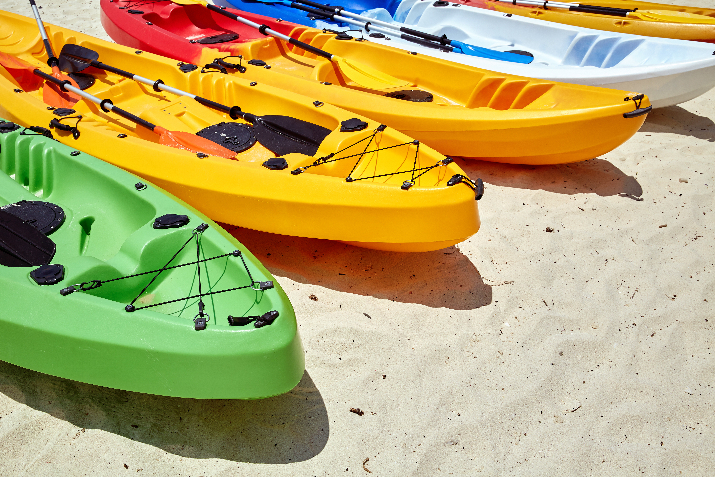
Photo by EZvereva via Shutterstock
Fortunately, even the most lightweight fishing kayaks aren’t the easiest things to simply pick up and walk off with. Most kayaks are relatively heavy and require careful consideration to transport safely.
Most people that have their kayaks stolen are the ones that leave them unlocked and unattended for long periods of time. For the casual passerby, it is hard to know if the guy hurriedly loading up a kayak is the actual owner or an unlawful thief.
As you might imagine, the summer months are the most likely period for kayak theft. Just like June through September becomes the best time to enjoy paddling on your favorite lakes, it is also the time of highest activity amongst kayak thieves.
Still, reporting agencies usually specify less than 1,000 incidents of kayak theft in even the most dangerous months. That is a nationwide statistic, which bodes well for your personal kayak.
Do You Need to Theft-Proof Your Kayak?
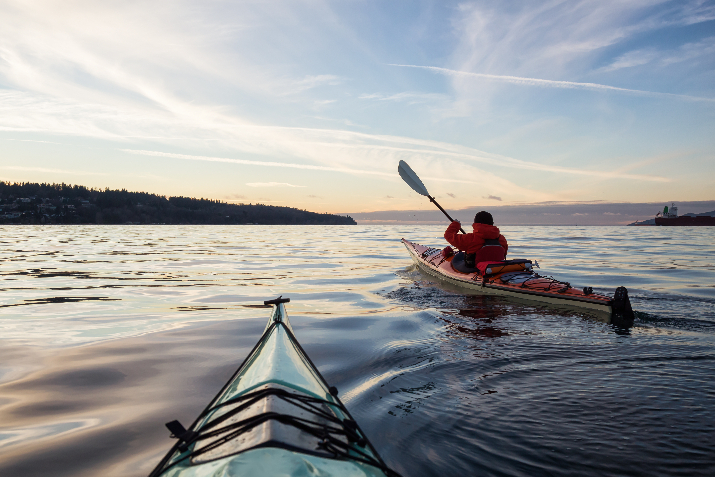
Photo by EB Adventure Photography via Shutterstock
That being said, personal watercraft have the lowest rate of return amongst all of the types of boats and watercraft that are reported stolen on an annual basis. That can either be attributed to the lack of reporting or the difficulty of proving rightful ownership.
For you, it might be intuitive to think that more expensive kayaks are more likely to be stolen. That very well may be true, but let’s take a second to think about this a little more deeply.
Most people that really know what they are looking for in a quality vessel from one of the best kayak brands have gained their knowledge over many years of building their passion for this sport.
They also happen to be people that have researched high-end kayaks because they probably have the means to buy one on their own. That can make them less likely to steal a kayak because they know it is worth four figures.
Kayak theft, in many cases, is a matter of more immediate need and impulsive action. That means that all kayaks can be targets regardless of their design and quality of manufacturing.
So it makes sense to protect your kayak whether you got it second-hand from a friend or paid top-dollar to have it shipped to you directly from a high-end manufacturer.
Kayak Theft Prevention Tips
1. Lock ”˜Em Up
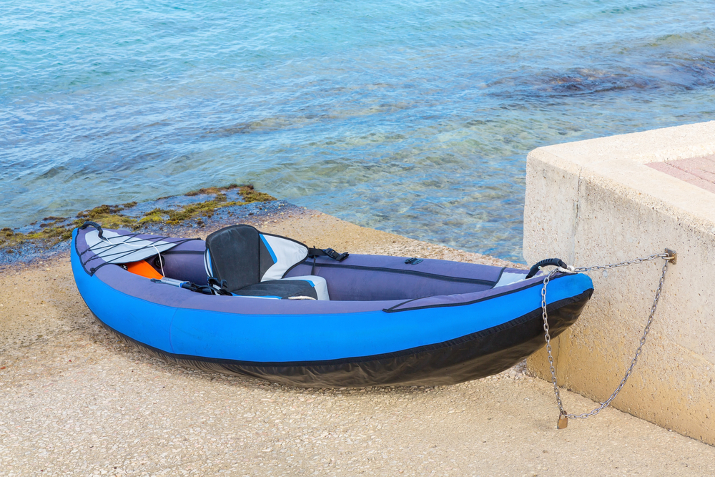
Photo by Ben Schonewille via Shutterstock
No matter where you store your kayaks when you are not using them, you can lock them up to something or somewhere. If you have multiple kayaks, simply locking them together can prevent theft by making them really awkward to move.
If you have a single kayak, you can lock it to an anchor point like a tree, fence post, deck support, dock stanchion, or anything else that isn’t going anywhere without a backhoe or a tractor. Just make sure that the anchor point you choose isn’t too easy to move on its own.
Also, make sure that you are choosing hard anchor points on your kayak itself. Simply threading a cable through the toggle-style handles on your kayak is rarely going to be enough to eschew would-be kayak thieves.
Instead, you will need to use molded-in handles or other points that are built into your kayak more permanently (like the scupper holes!). If your kayak doesn’t have any good points to thread a cable through, you will need to use a lasso-style cable lock designed specifically for closed-deck kayaks.
For more tips, check out our full article on how to lock up a kayak.
If you are transporting your kayaks on your roof rack for an extended trip, you can also get locking security straps. Many of these straps include built-in cables that make it tough for would-be thieves to cut through them and remove your kayak.
Plus, the sheer fact that your kayak will be stored on your roof will make thieves think twice. They will have to be comfortable with handling the weight of your kayak to get it off your roof before they go through with their heist plan.
2. Keep Them Out of Sight (And, Therefore, Out of Mind)
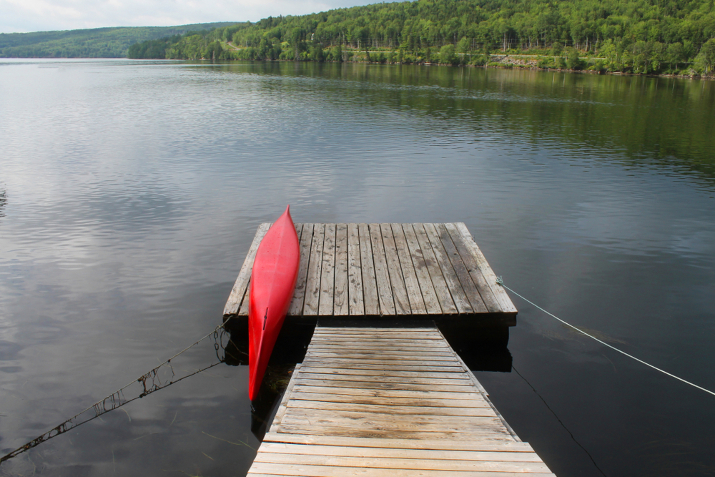
Photo by Chelsey Hyde via Shutterstock
If you are storing your kayak at home, the best thing you can do is to keep it out of the way of wandering eyes. Some easy ideas including storing them under your deck or in your garage.
While this suggestion won’t go as far as actually locking your kayak up to a permanent anchor point, it can prevent casual thieves simply because they may not realize that your kayak is even there.
Casual kayak theft is more common at lakefront properties. There may not be pre-meditated intent, but the lure of your bright, shiny kayak may be too much to pass up if it is clear that you haven’t locked it up properly.
If you purchase a folding kayak or one of the best inflatable kayaks, there is little reason to store it out in the open or even try strapping it on top of your vehicle. Simply fold or deflate your kayak and place it inside of your vehicle so that it stays out of sight when you have to run into the grocery store to pick up dinner on your way home.
3. Build A Kayak Storage Shed (That Locks!)
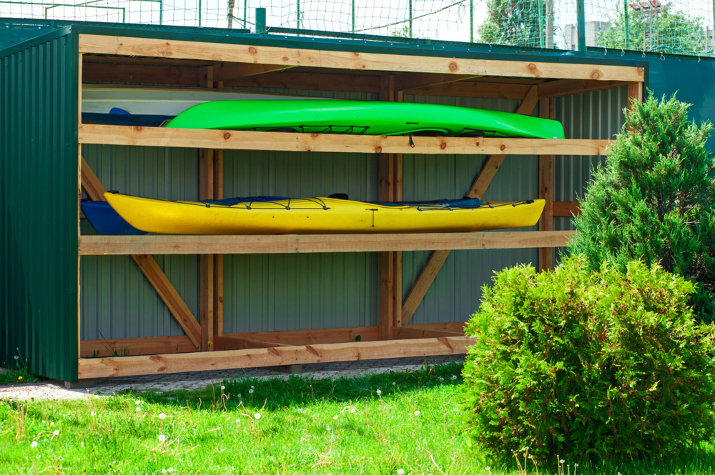
Photo by sergua via Shutterstock
If you don’t have a great place at your house to store your kayak out of sight (or in a locked garage), you could always build a storage shed particularly dedicated to kayak storage.
There are plenty of designs out there and the good news about building a shed for kayaks is that it doesn’t have to be able to hold several hundred pounds. It just needs to support the weight of your kayaks (or even just provide a cover for them) and give you a way to lock your kayaks up.
Even you use a cable to lock your kayaks up once you are finished, you can get away with building a simple kayak storage rack instead of a fully enclosed shed.
These days, there are even pre-fabricated storage sheds that you can pick up pretty cheap from your local hardware store. That could always be a better option if you have a larger budget and want to save a little time.
Whether you choose to build your kayak storage shed or purchase a pre-made one, the key here is that it has a way for you to lock it. Either that or you need a way to lock your kayak to it!
4. Keep a Record Of Your Hull Identification Number
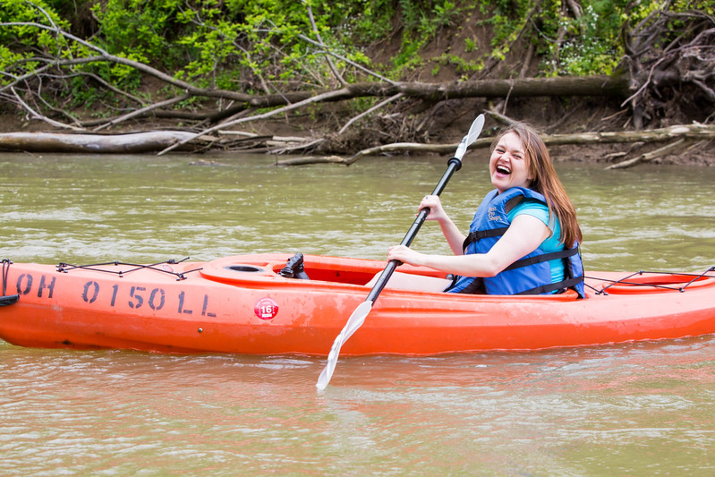
Photo by FarFlungTravels via Flickr
Every kayak from a reputable manufacturer has an identification number printed somewhere on the hull (usually on one side of the bow or stern). This 12-digit number is unique to your kayak and can be really helpful in the recovery effort if your kayak does get stolen.
While it may not necessarily help in keeping your kayak from getting stolen in the first place, it can be the key piece of evidence that helps law enforcement officials return it to its rightful owner.
In addition, some kayak manufacturers allow you to register the hull identification number of your kayak along with your name, address, contact number, and other personal information that will further speed in the recovery efforts if your kayak is stolen.
5. Hide a Second ID Number Somewhere Else On Your Kayak
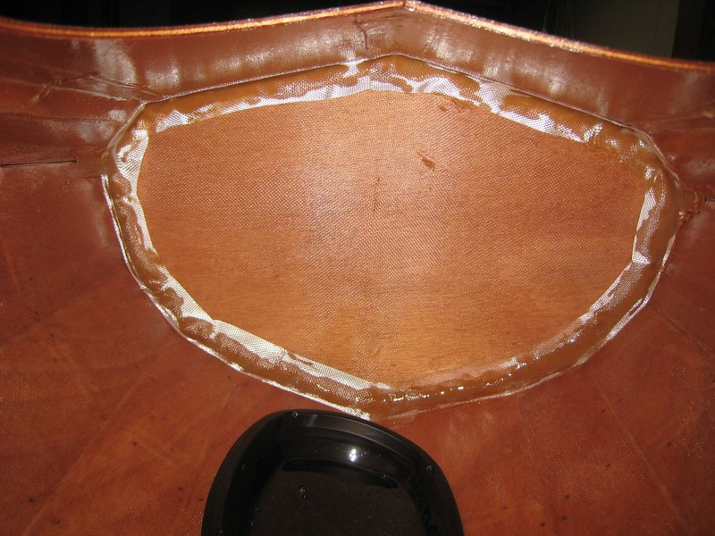
Photo by morkin_99 via Flickr
We have heard some unfortunate cases of kayak thieves scratching off or otherwise removing a hull identification number from a kayak. If they do this right after they steal it, it will be much harder for you to recover your kayak.
You can outsmart kayak thieves, however, by etching your hull identification number into a secondary hidden location on your kayak. If you have a sit-inside kayak, great places to do this include inside the cockpit or inside one of the bulkhead compartments.
For sit-on-top kayaks, even the smaller hatches can still be a useful place to hide a second identification number from would-be thieves. If your kayak does get stolen, you will then have a backup plan in place if yours was lifted by an especially strategic thief.
With this method, you will just need to be sure to report the hidden location of your secondary ID number to the appropriate authorities. While it may not guarantee the recovery and return of your kayak, it can certainly increase your odds!
6. Get Kayak Insurance
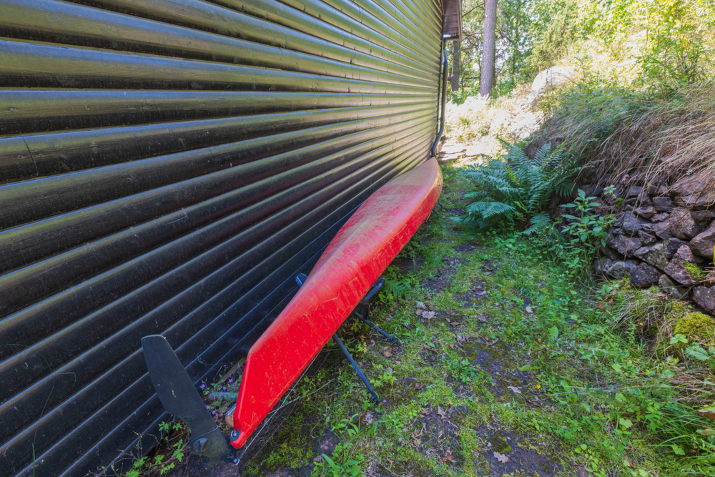
Photo by Mulevich via Shutterstock
Most homeowner’s insurance policies will include up to $1,500 in coverage for things like personal watercraft (yes, that includes kayaks) and the many accessories that go with them.
While this might not completely replace your kayak if you have a high-end touring kayak (or prevent it from being stolen in the first place), it will entitle you to a minimum level of compensation. That will provide a step that helps you more quickly get back to enjoying the sport you love.
7. Paint It Cleverly
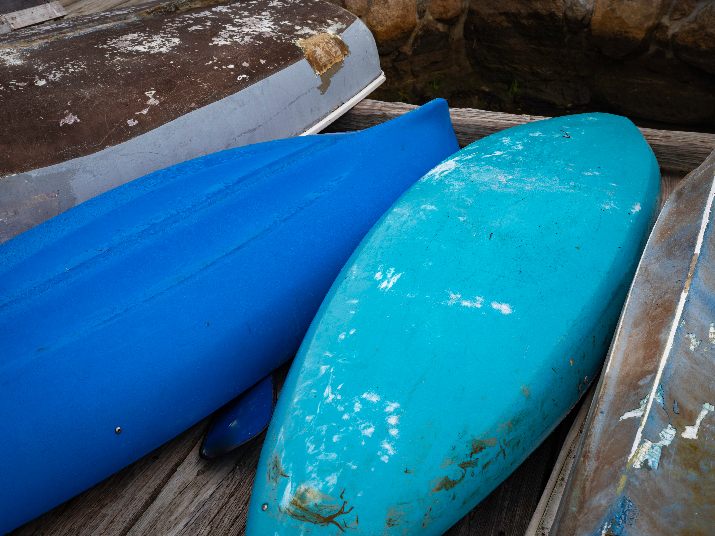
Photo by NayaDadara via Shutterstock
One seldom-talked about theft prevention tip is to paint your kayak to make it look less desirable to potential thieves. With a little creativity, you can actually paint your kayak to make it look much older and beaten up than it really is.
Ultimately, it will be up to you to choose the design and pattern that you think will make your kayak look less desirable. Just keep in mind that you will still need to be comfortable paddling a questionable-looking kayak when you aren’t hiding it from potential thieves.
For more tips on disguising your kayak, check out our full article on how to paint a kayak.
8. Do The Double Lock!
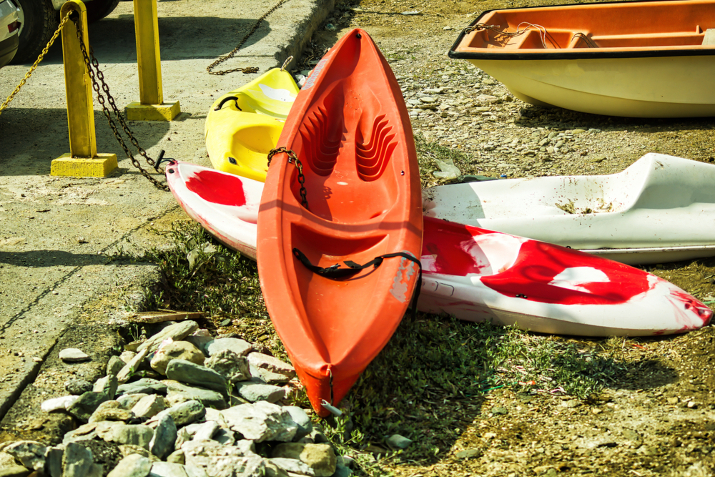
Photo by Arpan Bhatia via Shutterstock
If you aren’t satisfied with a single set of locking straps, you can always double down and get another locking mechanism for your kayak. At the very least, this will make your kayak look more like an impenetrable fortress than an easy target.
If you do opt for this method, it is a good idea to choose two different locking mechanisms instead of using identical ones. If your existing locking cables lock with a combination, for example, you may double down with a second set that requires a key to open the lock.
It can also be a good idea to get a second set of locking cables that are slightly thicker than your first set. This can serve to make potential thieves think twice about whether or not their bolt cutters will really be enough to cut through your cables or locking straps.
9. Avoid Buying Stolen Kayaks
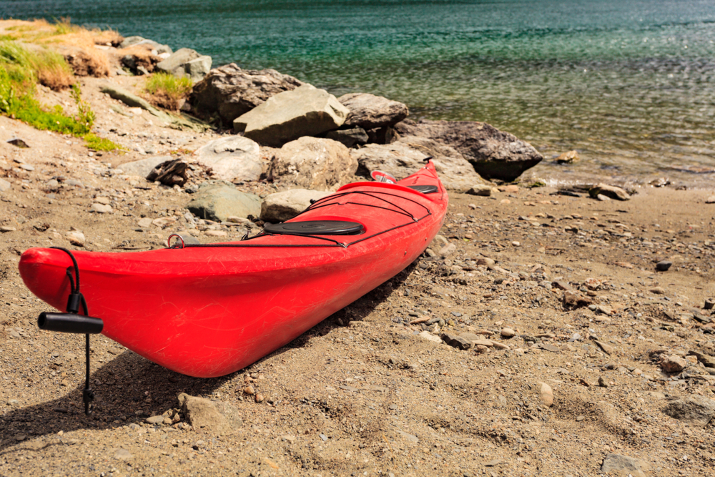
Photo by Voyagerix via Shutterstock
Now that we have talked about as many tips for kayak theft prevention and, quite frankly, recompensation in the event your kayak is stolen, it is time to talk a little bit about the demand side of the equation.
Some kayak thieves steal boats for their own personal use. Others, however, steal kayaks on a larger scale, scratch out their hull identification numbers, and then put them back on the market in an attempt to make money.
In addition to the many tips for buying a used kayak, there are some red flags you should look for to avoid buying a stolen kayak. Doing so will help to reduce the demand and serve to discourage kayak thieves from pursuing this path in the first place.
If a deal on a certain kayak seems “too good to be true,” then it probably is! Owners who are legitimately selling a kayak that belongs to them are more incentivized to advertise a competitive resale price for their kayak than people that are trying to sell stolen kayaks.
While better-than-average deals are a smart thing to look for, the major red flag for a stolen kayak is the lack of a hull identification number in its original location. When you arrive to check the kayak out, inspect the edges of the hull at the bow and stern to find the intact hull ID number.
If it is clear that it has been sanded down with a grinder, etched out, or simply marked out with a sticker or permanent marker, you are probably looking at a stolen kayak. Avoid the temptation to buy it and, in the interest of being a model citizen, please go a step further and report it to the authorities.
10. Rent Instead of Buying
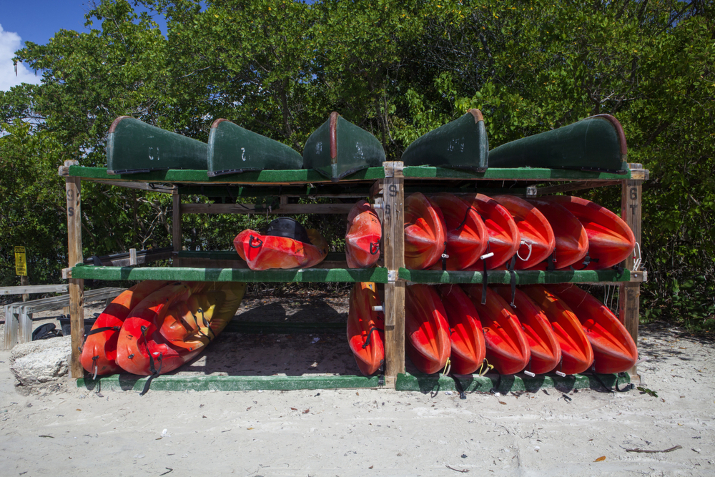
Photo by CE Photography via Shutterstock
The last tried and true way to prevent kayak theft (at least to your personal kayak) is always to rent instead of buying. You then pass along the responsibility of overnight kayak security to the rental company instead of assuming it yourself.
For beginners, renting is also a good way to get used to kayaking and learn the basics before you have to worry about how to transport a kayak safely and all of the other essentials that come along with kayak ownership.
While we do hope that one day you fall so deeply and madly in love with this sport that you want to buy your own kayak, there is no shame in renting. It is especially useful when you travel to new paddling locations where you are less sure about the safety and security of the areas you are staying in than you are when you are at home.
What Should You Do If Your Kayak Is Stolen?
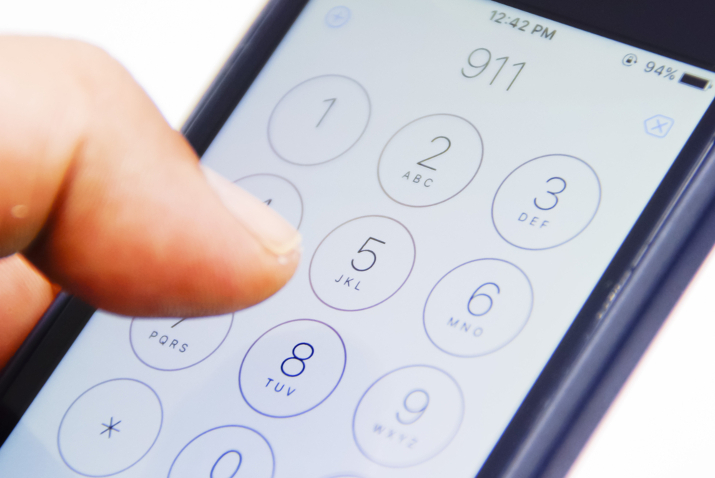
Photo by akids.photo.graphy via Shutterstock
If you discover that your kayak is missing, the first thing you should do is to report it missing to the authorities. Make sure you tell them your hull identification number so that they can use it to refine your search.
From there, it is a good idea to draft and publish a post to any local community networks on platforms like Facebook and NextDoor. This will help you get more eyes out there on the lookout for any kayak that meets your description.
You can also monitor resale websites like Craigslist and Facebook Marketplace. If the thief is silly enough to try to resell your kayak in the same geographical region in which they stole it, you may be able to catch them in the act by posing as a prospective buyer.
If you have the means to do so, you may even get lucky by taking a secondary watercraft out on the same body of water it was stolen from for a week or two after the date you report it missing.
While smart thieves will usually relocate stolen kayaks quickly, not all thieves aced their high school graduation exams. You might get lucky and spot your exact kayak being paddled around by a currently-content, but soon-to-be-caught-red-handed kayak thief.
If you do spot what you think is your kayak being paddled by someone else after it has been stolen, it is always good to proceed with caution. You never know when a thief may become combative or, in another scenario, when the person you see may have purchased a stolen kayak without realizing it.
The best course of action is to involve the local authorities that have more experience handling potentially combative, indignant, or completely unaware individuals.
Final Thoughts
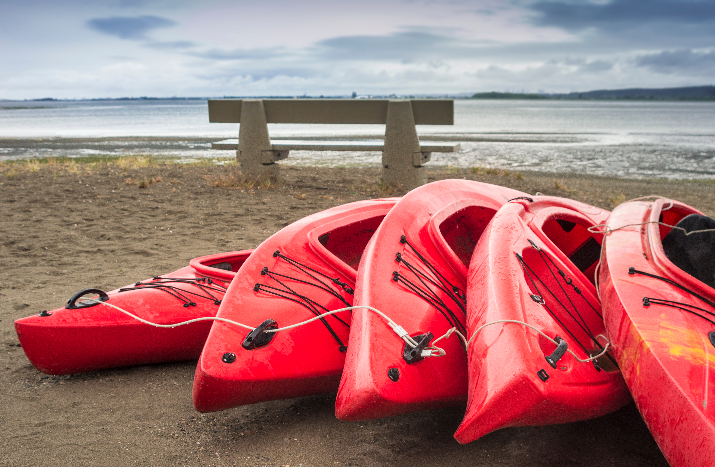
Photo by illuminaphoto via Shutterstock
As you can see, these kayak theft prevention tips are not rocket science. Most of them are simply a matter of being smart about how and where you store your kayak when you are not using it.
Some, however, may be less intuitive if you are new to this sport. For example, the tip about recording and marking a secondary hull identification number is something that very few beginners are aware of.
So, we hope that you feel more comfortable protecting your investment into one of the best kayaks for beginners after reading through this guide. It is our hope that kayakers everywhere take care of one another and treat their kayaks so that they last for many years.
As always, we want to wish you the safest of kayak storage efforts and the most awesome of actual paddling adventures for the coming months!
